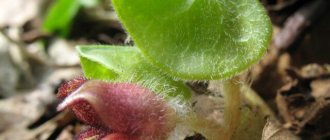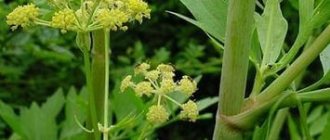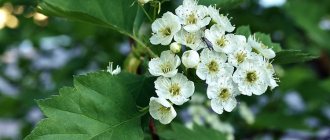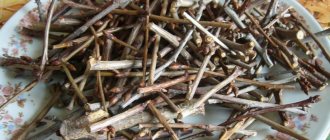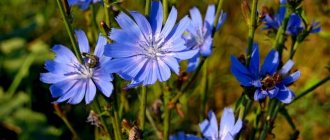Varieties of red currants
The ripening period of sorrel, care and planting in open ground depend on the variety, soil and climate in the cultivation area. A huge variety of plant varieties makes it possible to make a choice for every taste.
Although most are considered self-fertile, gardeners recommend growing several varieties to improve yield and cross-pollination. The taste of sorrel depends on the amount of sugar and organic acids in the fruit. Sweet varieties have a pronounced sweetness and a slightly sour taste. These include:
- "early sweet";
- "sugar";
- "Vika";
- "Dutch pink";
- "viksne";
- "pink pearl"
As a rule, most red currant varieties are cold-resistant. However, among them there are frost-resistant forms suitable for planting in places with harsh winters. Frost-resistant varieties include the following:
- "Natalie";
- "Jonker van Tets";
- “beloved”;
- “red Andreichenko”;
- "Dutch red"
Large-fruited varieties:
- "Ural beauty";
- "ilinka";
- "cascade";
- "roland";
- "alpha".
If you plant bushes of early ripening, mid-ripening and late ripening on the site, then you will feast on the fruits of red currants all summer long.
Contraindications
The use of products based on hare cabbage has very specific contraindications, and to neglect them means exposing your health to real danger.
Oxalis is prohibited:
- for problems with blood clotting;
- for gouty arthritis;
- with an existing tendency to seizures;
- with cirrhosis;
- for disorders of the kidneys and liver.
A high concentration of oxalic acid in the plant can have a detrimental effect on the functioning of the kidneys, so special attention should be paid to the dosage and timing of use of preparations with oxalis.
Planting currants in autumn
Oxalis berries can be planted both in spring and autumn. This plant is not recommended for growing in areas after gooseberries, as well as after uprooting old sorrel bushes. With the classic method of bush growing, plants are planted at a distance of one meter from each other and with a row spacing of two and a half meters. In the Urals and Siberia, planting is best done at the end of August.
In the southern regions, red currants are planted from mid-September to the first week of October. The main guideline for planting a plant is considered to be a steady cooling. Red currants need to be planted about a month before the cold weather. Bushes are best placed in open, sunny and well-ventilated areas. This will help reduce the risk of fungal diseases. Currants are an unpretentious crop and adapt well to harsh climatic conditions.
Folk recipes
Fever
Two heaped spoons of chopped sorrel grass, one and a half glasses of boiled milk are heated over low heat for an hour, chilled, and filtered. Drink 100 ml half an hour before meals to reduce fever.
For digestion
Half a teaspoon of dried herb is poured into a glass of boiling water and left under the lid for three hours. Take a tablespoon before meals.
Sore throat decoction
An insidious disease comes by surprise and is fraught with terrible complications, but if you have wood sorrel nearby, you can make a decoction at the first symptoms, thereby reducing the risk of negative consequences. You will need two teaspoons per glass of boiled water, boil for two minutes, remove from heat, and let stand until completely cooled. Consume before meals.
Planting currants in spring
In spring, red currants must be planted before active sap flow begins. Planting of seedlings should be done in a hole 40 cm deep and 50 cm in diameter, this will allow the root system to be well placed. As a top dressing, you can use ten liters of compost or manure with the addition of fifty grams of superphosphate, the same amount of potassium chloride and a little wood ash. In the middle part of the country, the soil and climate are excellent for planting and growing red currants. Therefore, the bush will not cause much trouble for gardeners.
Description of the plant
Leaves
Oxalis is an annual or perennial herbaceous plant of the Oxalis family. It reaches a height of 40 cm. It has creeping stems. The rhizome of the flower can be creeping or gnarled, in the form of a tuber or bulb.
Oxalis leaves are curly and divided into three or four parts. There are plants whose leaves are divided into five, six or nine parts, but these are fewer. Even rarer are Oxalis specimens, the leaves of which are divided into 15-19 lobes, which gives the rosette a unique futuristic appearance.
The leaves are held on long thin petioles. They are arranged in a circle and are very reminiscent of butterfly wings. The shoots are collected in a bush. When there are a lot of them, the bush becomes lush and attractive. The leaves are not only green in color, but also orange-red, purple and violet. Some are distinguished by the variegated color of their leaf surface.
Flowers
Oxalis is a flowering plant. At home, it blooms almost all year round with umbrella-shaped inflorescences. Its flowers are small, with five petals. The color of the petals includes all shades of white, yellow, lilac, pink and cream. In some species of Oxalis, the flowers are completely white, while in others they are decorated with pink or purple veins. The peculiarity of leaves folding at times is also inherent in flowers. They are very sensitive. Many varieties of Oxalis close their corollas not only at night, but also in cloudy weather.
Fetus
The fruit of Oxalis is a box with valves, inside of which there are seeds. The shell in which the ripe seeds are collected is very thin and is easily torn by any touch.
This may be interesting: Fuchsia: description of varieties with photos
Watering
Timely watering is considered the key to a rich harvest. Thanks to its developed root system, sorrel is resistant to drought. Lack of water primarily affects the growth, development and fruiting of the plant.
Therefore, during the period of growth and ripening of berries, regular moistening is necessary, allowing the soil to be saturated with moisture to a depth of 50–60 cm. One bush requires about two buckets of water, which is poured into grooves dug at a distance of about 30 cm from the plant.
Preparation and storage of plants
The peak concentration of nutrients in the plant occurs during the flowering period, when they harvest it - this is May-June. The procedure is standard - the above-ground part of the grass is collected and dried in the shade or in a dryer (at a temperature not exceeding 40ºC). The most suitable storage conditions are in cardboard or wooden boxes. Can be stored for no more than a year.
The root of the plant is also harvested. It is dug up in the fall, cleared of soil, cut into pieces and dried, laying out in a ventilated room.
Traditional medicine is famous for the presence of many effective recipes that use a variety of ingredients - herbs that grow everywhere and exotic specimens. To help the body, you only need to scrupulously follow the advice based on centuries of experience. We invite you to study the incredibly wide range of medicinal properties of calendula, which is more often simply called “marigolds,” the unique combination of medicinal substances in the well-known Kalanchoe plant, as well as ways to use cocoa butter for health benefits.
Dear readers, tell us about your own experience of using the beneficial properties of plants to treat various diseases, including the use of drugs that include the sorrel described in this article . Perhaps you have other recipes that are not covered in the proposed material? We invite you to dialogue - maybe someone is in dire need of your recipes and experience.
Fertilizer application
For the first two years after planting an oxalis bush, fertilizing is not required if the planting technology is followed and the required amount of fertilizing is applied to the planting hole. At the beginning of the spring, as soon as the shoots begin to grow, twenty grams of urea or thirty grams of ammonium nitrate are added to each bush.
After flowering, it is advisable to feed it with organic matter: an aqueous solution based on bird droppings (1:20) or mullein (1:10). A bucket of this solution is placed under the currant bush. In addition, red currants can be fed with complex mineral fertilizers at the rate of twenty grams per square meter. In late autumn it needs mineral and organic fertilizers.
Planting with seeds
In the wild, wood sorrel reproduces by seed. At home, this method is also suitable, but it is very time-consuming and not always effective, so it is rarely used by gardeners. But if you wish, you can try to grow the plant from seeds.
To do this you will need:
- Select a suitable soil mixture. It must contain sand, peat, humus.
- Plant the seeds in the prepared place, simply spreading them over the surface of the soil. There is no need to cover them with soil.
- Cover the pot with film or glass, place the container in a cool room with a temperature of 16-18 degrees. Also, the place should be well lit. It is important that the sunlight is diffused.
- Next, monitor the soil moisture and ventilate the room.
With proper care, the first shoots appear after 2-3 weeks.
Pests of red currants
Diseases and treatment of wood sorrel will be discussed below, but now we will pay attention to the pests that are most often found on plant bushes and ways to combat them. When parasites appear, there is no need to immediately use chemical remedies. If there are few of them, they can be collected manually and destroyed. Pesticides are recommended to be used only when absolutely necessary. Compliance with the rules of agricultural technology is the key to a good harvest and protection of the plant from diseases. The bushes need to be trimmed (how to trim currants is described below), damaged parts must be burned, and autumn digging should be carried out.
Pests of red currant:
- The currant borer feeds on the pith of wood sorrel branches. To combat it, it is recommended to cut and burn the shoots, and it is also necessary to carefully select planting material.
- Spider mites damage red currant leaves. To destroy, immediately after flowering, the bushes are treated with Fitoverm at the rate of two milliliters per liter of water.
- The currant bud moth damages the buds and fruits of sorrel berries. When bushes are infected, it is necessary to cut out damaged shoots at the root and burn them.
- The gooseberry moth is a fairly common pest that attacks currant berries. If early colored berries are found, long before ripening, they should be collected and destroyed. It is also recommended to dig up the soil around the bush in the autumn.
- The pale-legged sawfly typically damages wood sorrel leaves. In spring and summer, it is necessary to remove the larvae from the leaves of the bush, and also spray it with a decoction of tobacco and wormwood.
- The gooseberry moth eats the leaf blade, as well as the veins of the bushes. To combat it, you should use a tincture of chamomile, a decoction of shag and tobacco.
- Currant glassberry is one of the most dangerous pests. It damages the core of the branches, as a result of which they dry out and die. To avoid this, it is necessary to prune the bushes in early spring, while the buds are dormant. In addition, the soil and bushes can be treated with Fitoverm.
- Shoot aphids are also very common. To combat this pest, you should spray the bushes with a ten percent solution of Karbofos until the buds open.
Methods of preparation and use
Several products with strong medicinal effects are prepared based on dried and fresh herbs. Each of them retains the maximum amount of useful substances.
Tincture
Alcohol tincture is used to treat skin lesions and to treat inflammation when taken internally. The recipe for preparing the medicine looks like this:
- 50 g of dried herb is poured with 500 ml of vodka;
- in a closed container, keep for ten days in a dark, cool place;
- filter through cheesecloth into another container.
You need to take the tincture in small dosages - 30 drops three times a day.
When consumed, it is recommended to dilute the herbal tincture of sorrel in a spoonful of water.
Infusion
A healthy aqueous infusion is prepared using fresh leaves of common sorrel. Traditional medicine offers the following recipe:
- the plant is crushed with a mortar to a pulp;
- measure out a large spoon of raw materials and pour in 500 ml of boiling water;
- keep under the lid for two hours, then filter.
The infusion should be taken up to four times a day, 15 ml. It helps well with inflammation and bleeding gums, and is suitable for use as a lotion for insect bites, cuts and burns.
Oxalis infusion can be used to gargle for coughs and sore throats.
Juice
To prepare fresh sour oxalis juice, you need to grind the leaves of the plant by hand or in a blender. For medicinal use, the product is mixed with honey in a 1:1 ratio. It is useful to use the drug for inflammation of the gums; it is applied externally to the skin for dermatitis and trophic ulcers.
Before processing, the leaves of common sorrel must be thoroughly washed.
Decoction
A medicinal decoction of common sorrel helps with sluggish digestion, lack of appetite and difficulties with the outflow of bile. It is prepared like this:
- grind the dry leaves of the plant in the volume of a small spoon;
- pour a glass of hot water;
- bring to a boil and heat over low heat for ten minutes;
- filter and cool.
You need to take the product 15 ml three times a day.
Oxalis decoction helps with periodontal disease and reduces bleeding gums
Tea
You can make aromatic and healthy tea using common sorrel. They do it like this:
- two small spoons of dry leaves and flowers are poured with 300 ml of water;
- heat on the stove and turn off immediately after boiling;
- leave covered for ten minutes;
- pass through a fine sieve.
Recommended reading: Benefits of milk tea
You can drink up to two cups of beautiful and tasty tea a day. It has strengthening properties and improves immunity during seasonal colds.
Sour tea is consumed with honey or sugar
Oxalis diseases
Another problem for gardeners is red currant diseases. Both treatment and signs of diseases are described below.
- Powdery mildew is quite rare. When infected, a white coating forms on young leaves and fruits. To combat it, you need to spray red currants with a solution of pharmaceutical iodine. With timely treatment, the disease can be defeated fairly quickly.
- Anthracnose is a fungal disease, the development of which is favored by a humid climate. If dark spots are detected, it is recommended to apply fungicides.
- White spotting is considered quite common; it causes leaves to fall, bush growth stops and crops die. To treat sorrel berries, it is necessary to treat them with copper sulfate. For preventative purposes, monitor soil moisture and promptly remove fallen leaves, as well as dig up the soil in autumn and early spring.
- Columnar and goblet rust. With these diseases, bright orange growths form. It is treated with fungicides, and the plant can also be sprayed with 1% Bordeaux mixture.
Popular types of wood sorrel with photos and names
Oxalis is very diverse. There are more than 800 species in the genus. Russia is the natural habitat for 5-6 of them.
Common sorrel (Oxalis acetosella). Most often found in shady coniferous forests. Perennial herbs grow only 5-12 cm in height. The thin creeping rhizome enters into symbiosis with fungi, due to which swellings form on the underground shoots. The leaves on thin flexible petioles have a trifoliate shape with heart-shaped lobes. They are green in color and have a sour taste due to the high content of oxalic acid. Single cream flowers bloom on a peduncle 5-10 cm long in May-June. Their petals are covered with purple or pink veins and have a rounded edge.
Common sorrel.
Oxalis tuberiferous.
Oxalis tuberiferous. The variety lives in Central and South America, where it is cultivated along with potatoes. Plants similarly grow very weighty oblong tubers with a high starch content on their roots. The leaves of this species have a trifoliate shape and a uniform green color. Single flowers consist of five pinkish petals.
Four-leaf sorrel (Oxalis tetraphylla). A bulbous perennial native to Mexico and Panama. It is more often used as a houseplant. The height of the bush is 15 cm. The brownish black bulb feeds a shortened stem and a rosette of 3-6 long-petioled leaves with heart-shaped segments. The leaves are green in color with a brown or purple spot in the center. In June-September, loose umbrella inflorescences bloom above the foliage on long peduncles. Funnel-shaped deep pink or red-violet flowers with a yellowish throat. Their diameter is about 2 cm.
Oxalis four-leaf.
Oxalis triangularis (purple).
Oxalis triangularis. Warm-loving plants for indoor growing are distinguished by large, dark purple leaves with a lighter center. Each petiole has 3 angular plates. Small light pink flowers are collected on long flexible peduncles in loose inflorescences.
Oxalis adenophylla. The popular garden plant forms a dense flowering bush just 8 cm in height and almost 15 cm in diameter. The grey-green oval leaves are quite distinctive. Each petiole can contain 9-22 segments, folded like a fan. In June-July, large white-silver flowers with a pinkish mesh of veins on the inner surface bloom.
Oxalis ferruginosa.
Oxalis carob.
Oxalis carob. Low-growing groundcover grasses are quite tenacious, so they are considered a weed by many gardeners. Each petiole has 3 heart-shaped lobes of a cherry, almost brown hue. Small light pink flowers bloom singly or in groups of up to 3 pieces.
Variegated sorrel. The original indoor variety produces bright green leaves with very narrow, almost linear lobes. The petals of its flowers are curled into a narrow tube at night. Inside they have a plain white color, and on the outside they are edged with a burgundy or scarlet border. The height of the plant reaches 15 cm. Its homeland is South Africa.
Variegated sorrel.
Pruning red currant bushes
When growing shrubs, it is important to know how to prune currants correctly. There is formative and sanitary pruning. Red currants should be pruned at the beginning of the autumn period, as well as after harvesting.
Remove old, broken, diseased branches and extra null shoots. In the spring, you can carry out sanitary pruning. You cannot cut off the tops of branches where there are a large number of berry branches. A well-formed plant has approximately twenty branches.
Beneficial properties of red currants
Eating currant fruits helps absorb animal proteins, improves appetite, and also relieves constipation. Oxalis berries contain a special substance - oxycoumarin, which has an excellent effect on blood clotting. In addition, the fruits contain a large amount of iron, which increases hemoglobin, and also regulates water-salt balance and normalizes heart function. Red currant fruits are an excellent remedy for the prevention of cardiovascular diseases.
The pectins contained in sorrel fruits prevent inflammatory processes and remove harmful substances. Red currant strengthens the immune system. Fruit drink or juice from sorrel fruits is used for nausea and toxicosis in pregnant women. Red currants are an excellent source of energy, as the fruit contains a complex of B vitamins and sugars. Regular consumption of fruit drink made from sorrel berries normalizes the level of hemoglobin in the blood. The beneficial properties of red currant leaves are diuretic and bactericidal. Oxalis leaves also contain ascorbic acid. The great advantage of red currant is that it can be eaten by allergy sufferers, but if you have poor blood clotting, ulcers, or hemophilia, it is better to avoid it.
The use of wood sorrel in folk medicine
The beneficial properties of common sorrel are used for inflammatory, intestinal and colds. Traditional medicine offers many recipes based on forest plants.
At high temperature
The beneficial properties of oxalis flowers and leaves help with fever and relieve fever. For a cold, prepare the following decoction:
- pour 200 ml of hot milk into a large spoon of dry grass;
- simmer for half an hour in a water bath;
- cool and pass through folded gauze.
It is necessary to use the remedy from common sorrel three times a day on an empty stomach. Treatment is continued until the temperature drops.
For atherosclerosis
The medicinal properties of common sorrel improve blood circulation, increase the elasticity of vascular walls and reduce the level of bad cholesterol. For atherosclerosis, the following drug has a beneficial effect:
- pour 400 ml of liquid into a large spoon of dried leaves of the plant;
- Boil for 15 minutes in a water bath over low heat;
- keep covered until cool.
The finished broth is passed through a layer of gauze for filtration. Drink the drug half a glass three times a day; you can take the drink simultaneously with food. The product cannot be stored for a long time - it is prepared anew every day.
For nephritis
The beneficial properties of garden sorrel have a good effect on kidney inflammation. For nephritis, traditional medicine recommends the following recipe:
- a small spoon of plant leaves is poured with 250 ml of boiling water;
- cover the container with a lid for two hours;
- strain after cooling.
Take 15 ml of the product four times a day for three weeks. Then you need to pause for a week and a half and conduct another course of therapy.
Important! It is not recommended to use common sorrel if there are large stones in the kidneys, since the plant can provoke their movement and severe pain.
From worms
The active substances in the composition of common sorrel suppress the vital activity of parasites in the intestines and promote their elimination. For worms, you should prepare the following healing decoction:
- fresh leaves of the plant are washed and doused with boiling water, and then ground with a mortar or minced through a meat grinder;
- squeeze the juice out of the resulting pulp through folded gauze;
- the liquid is diluted by half with clean water;
- Bring to a boil on the stove and immediately turn off.
The cooled product is taken three times a day, 15 ml, mixing the medicine with 5 g of honey. Treatment is carried out for a week, and then after a month's break, if necessary, the course is repeated.
For stomatitis
A strong tincture of common sorrel has a good effect on inflammation of the oral cavity. It is made according to this recipe:
- 50 g of dry leaves of medicinal herb are poured with 500 ml of vodka;
- leave the closed vessel in a dark place for ten days;
- passed through cheesecloth for filtration.
For medicinal purposes, it is necessary to dilute 30 ml of tincture in 100 ml of water and rinse your mouth up to four times a day.
For stomatitis, you can also use fresh sorrel juice, diluted with water in a ratio of 1:10



